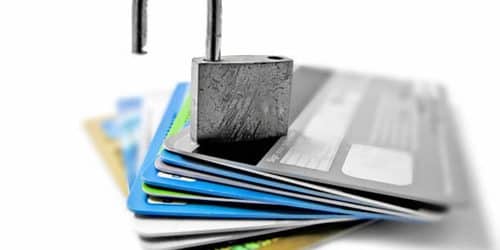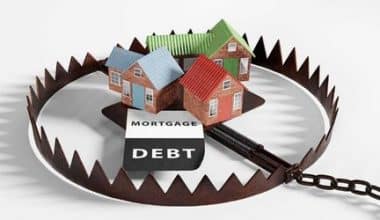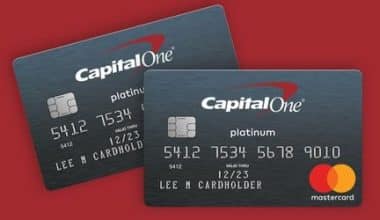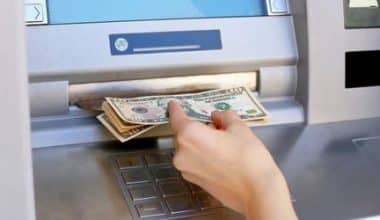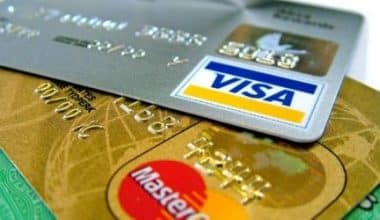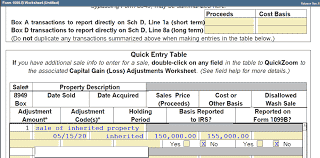Credit cards have become almost ubiquitous in modern life. When people talk about credit cards, they usually mean unsecured credit cards, which don’t require any collateral, such as a deposit, to be approved. The most common credit cards are unsecured credit cards. Individuals with poor credit histories, or none at all, may have difficulty qualifying for one. Unsecured credit cards, unlike secured credit cards, do not require a deposit as collateral, so the credit limit is determined solely by the cardholder’s credit. Let’s look at how an unsecured credit card works, the difference between secured and unsecured credit cards, and a list of the best-unsecured credit cards for bad credit.
What is an Unsecured Credit Card?
The majority of credit cards on the market are unsecured credit cards. An unsecured credit card provides you with a line of credit that you can draw from and then pay off each month. Your eligibility and credit limit for an unsecured credit card are determined by the issuer’s assessment of your ability to make timely payments on any balances you have on your card.
When you apply for an unsecured credit card, the credit card company will look at your personal information, such as your annual income, as well as your credit score, to determine your eligibility. Because unsecured credit cards are not secured by a deposit, your card issuer will not have access to funds to handle any unpaid debt on your account. This is why, before approving an application, issuers consider several factors to determine the likelihood that you’ll be able to pay off the charges you put on your card.
Unsecured Credit Cards for People with Various Credit Scores
Numerous factors determine whether you are eligible for an unsecured credit card.
Among these factors are your credit reports and credit scores. This is because your credit reports and scores provide lenders with information about your credit history and current credit situation. According to the Consumer Financial Protection Bureau, “a credit score predicts your likelihood of repaying a loan on time.”
#1. Good and Excellent Credit Scores
Consumers with higher credit scores may have more credit card options than those with lower credit scores. Good credit scores are usually the result of responsible behavior, such as making on-time payments and not applying for more credit than you need.
Some unsecured cards are only available to people with good credit, which, according to FICO, ranges from 670 to 739. VantageScore® score of 661 to 780 is considered good. However, keep in mind that lending decisions are ultimately made by credit card issuers, not credit-scoring companies.
#2. Fair Credit Scores
If you have less-than-perfect credit, you may be wondering what options you have for unsecured credit cards.
Unsecured cards may be available to those with what is considered fair credit. Fair credit scores can differ depending on credit-scoring models and the companies that calculate them.
FICO scores ranging from 580 to 669 are considered fair. VantageScore’s acceptable range is typically between 601 and 660. Credit scores can be improved by using credit responsibly, such as paying down debts and avoiding late payments.
#3. Poor Credit Scores
Don’t be concerned if your credit is considered poor—there may still be credit cards available to you. You can also use them to build your credit if you use them responsibly. Just keep in mind that your options may be limited.
Unsecured Credit Cards for Bad Credit
This section lists the best-unsecured credit cards for people with bad credit. We chose these unsecured credit cards because they are aimed at consumers with poor credit, defined as a FICO score of 580 or lower.
The majority of these cards have relatively high APRs, low credit limits, meager rewards, and high fees—typical characteristics that credit card companies impose in exchange for assuming the risk that cardmembers will default on their credit card debt.
Best Unsecured Credit Cards
The majority of these cards allow you to test the waters with a no-risk prequalification process. Regardless of how bad your credit is, at least one of these best-unsecured cards may accept you as a card member, allowing you to shop without cash, a checkbook, or a debit card.
#1. Surge Mastercard®
The Surge Mastercard® comes with no fraud liability and other standard Mastercard benefits. While the card’s initial credit limit is low, you can increase it by paying on time for six months in a row. You can manage the card online and via a mobile app, among other things, to view balances and make timely payments. The card can help you build credit and track your credit score for free.
#2. Reflex Mastercard®
The Reflex Mastercard® allows you to prequalify in under a minute while maintaining your low credit score. This unsecured card has a credit limit range that is greater than that of some competitors. It has an annual fee, but it has no fraud liability.
If you pay at least the minimum payment due each month for six months, you may be eligible for a higher credit limit on your Reflex Mastercard®. You may be able to avoid the monthly maintenance fee depending on your credit score (which in any event is always waived for the first year). A foreign transaction fee is also charged, as are fees for additional cards, cash advances, late payments, and returned payments.
#3. Revvi Card
The only card in this review that offers cash back rewards is the Revvi Card. It also includes $0 fraud liability, a user-friendly mobile app, and monthly credit bureau reporting helping you build credit. The purchase APR is high, and there are fees for cash advances, foreign transactions, late payments, and returned payments, as well as an annual fee and a program fee.
#4. FIT Mastercard®
Because it reports transactions to all three credit bureaus, the FIT Mastercard® can help you improve your credit. A one-time processing fee, an annual fee, and fees for cash advances, foreign transactions, late or returned payments, and additional cards are all charged by the card. The monthly maintenance fee is waived for the first 12 months after the account is opened.
After six months of on-time payments, cardholders receive no fraud liability and an automatic evaluation for a higher credit limit. Optional credit protection against death, job loss, disability, or hospitalization is available. This card is issued by the Bank of Missouri.
#5. Total Visa® Card
The Total Visa® Card has a fast application process and an instant decision. The APR is higher than on some of the other cards in this review, and the grace period is one of the shortest at 21 days. The card has a one-time program fee, an annual fee, and a monthly servicing fee that is waived for the first year, as is the cash advance fee.
A program fee is assessed by the card and deducted from your initial credit limit. Late and returned payments both result in fees. Because the initial credit limit is low, your monthly payment requirement should be manageable.
#6. Indigo® Unsecured Mastercard®
The Indigo® Unsecured Mastercard® – Prior Bankruptcy is Okay is a card that is so tolerant of less-than-perfect credit that it may approve your application even if you have previously filed for bankruptcy. You can prequalify for the card without jeopardizing your low credit score, and then use the card to rebuild your credit as each major credit bureau receives your transaction details each month.
#7. Milestone® Mastercard®
Milestone® Mastercard® Despite your less-than-perfect credit, the Bank of Missouri will consider your application. You can prequalify for this card in a few steps, and if the issuer is unable to match you to one of its cards, it may prequalify you for another bank’s card.
The card has an annual fee and a foreign transaction fee, but no monthly maintenance fee. Cash advances, over-limit transactions, and late or returned payments all incur fees. With the accompanying app, you can enjoy mobile access, and the card automatically protects you if your card is lost or stolen.
#8. Progress Credit
Despite your imperfect credit history, Progress Credit works with two issuers to provide you with both an unsecured Visa credit card and a secured MasterCard. Indeed, the unsecured card is one of the simplest to obtain. The Bank of Missouri’s unsecured Visa card offers nationwide acceptance as well as security features.
Both cards help you build credit because they report your transaction activity to each major credit bureau separately. If your application is approved, the unsecured card will charge a one-time program fee. The card cannot be used at gas stations, for gambling, or with foreign merchants.
What Is the Difference Between Secured and Unsecured Credit?
The deposit is the most significant difference between a secured and unsecured credit card. When you open a secured credit card, you must put down a security deposit to secure your credit line. This is similar to a secured loan in that collateral is required. In most cases, the deposit you make on your secured credit card will be equal to your credit limit.
Many secured cards allow you to deposit additional funds over time to increase your credit line. Plus, if you want to close your card account in good standing or qualify for an unsecured card, you’ll get your deposit back in full.
Unsecured credit cards do not require a down payment as collateral. If you are approved for an unsecured credit card but have poor credit, you may be assigned a low credit limit. A low credit score or a lack of credit history can be an indicator of risk to issuers; the more evidence you can show of using credit and repaying it over time, the more likely an issuer will trust you with a larger credit line.
Both secured and unsecured credit cards can be useful tools for credit building, as long as your issuer reports your credit movements, including on-time monthly payments, to the three credit bureaus regularly.
How we Chose the Best-unsecured Credit Cards for People with Bad Credit
We looked for card issuers who said they would consider applicants with average, damaged, or limited credit histories when selecting the best-unsecured credit cards for bad credit.
We also looked for cards with low fees. You’re probably looking for unsecured cards for bad credit to avoid having to pay the deposits that secured cards require. However, if an unsecured card has a high annual fee, the whole purpose is defeated.
After a certain number of on-time payments, some secured cards will refund the deposit you paid. So you’d get your money back eventually. However, this is not the case with annual fees.
Finally, we sought out unsecured credit cards for people with bad credit that offered rewards. We believe that while you’re working to build your credit, you shouldn’t be left out in the cold when it comes to earning cash back or points. Fortunately, the majority of the card issuers on this list agree.
What is the difference between secured and unsecured credit?
Most standard types of mortgages and auto loans, for example, are considered secured credit because the loan holder can repossess your home or car if you fail to pay on time. An unsecured loan or line of credit, on the other hand, does not require any collateral.
Is an unsecured credit card good?
Unsecured credit cards may have lower interest rates and fees than secured credit cards. Furthermore, you may be approved for a higher credit limit, which will help you improve your credit utilization ratio. As a bonus, many unsecured credit cards allow you to earn rewards.
How do you use unsecured credit?
Unsecured credit cards, unlike secured credit cards, do not require you to put up any collateral. Based on the information it receives, the issuer will either approve or deny your application. It may also use this information to help determine your credit limit and interest rate on your card.
What is an unsecured credit limit?
Because unsecured credit cards do not require collateral, the terms of the debt are determined by the borrower’s credit score, ability to pay, application information, and other factors.
What is a perfect credit score?
You have the highest credit score possible in both the FICO and VantageScore credit scoring systems if your credit score is 850. The FICO credit scoring system, on the other hand, considers all credit scores above 800 to be exceptional.
What credit score is needed for an unsecured credit card?
Most unsecured credit cards require good to excellent credit (670-850). This range is where you will become eligible for a variety of reward cards. You can also find some cards that will accept a fair to good score (580-669)
Conclusion
Unsecured credit cards for people with bad credit have a few drawbacks that make them unappealing to the average consumer. But, in that case, what’s not to love? They don’t require a security deposit, and the products on the market today offer a wide range of benefits and rewards that will appeal to almost anyone. It is not the end of the world if you are new to the credit card game and do not yet qualify. A secured credit card can help you build your credit while you figure out what your long-term financial goals are. Who knows, maybe you’ll graduate to an unsecured card way ahead of schedule simply by developing and adhering to strong habits.
Unsecured Credit FAQs
What types of credit are unsecured?
Personal loans, student loans, and most credit cards are examples of unsecured loans, which can be revolving or term loans. A revolving loan is one with a credit limit that can be used, repaid, and used again. Credit cards and personal lines of credit are examples of revolving unsecured loans
What happens if I don’t pay my unsecured loan?
A late fee is usually charged by the lender in the case of an unsecured loan. Even if the loan is unsecured, the lender will require a personal guarantee or a lien on your business assets. As a result, if your company fails again, the lender may file a lawsuit against you.
What are three examples of secured credit?
Some common examples of secured credit include home equity loans, credit line mortgages, and secured credit cards.
